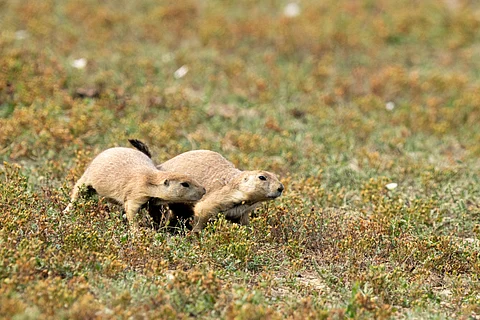

Genetic diversity among mammals, birds and marine species is declining worldwide, according to an analysis by an international team of scientists.
The landmark study, spanning more than three decades (1985-2019), examined 628 species of animals, plants and fungi across terrestrial and marine ecosystems. The findings, published in the journal Nature, involved researchers from Australia, United Kingdom, Sweden, Poland, Spain, Greece and China.
The analysis revealed that two-thirds of the studied populations are experiencing a decline in genetic diversity, with less than half receiving any conservation management.
The majority of species studied were animals (84.7 per cent), including vertebrates (59.2 per cent) and invertebrates (25.5 per cent), followed by plants (12.7 per cent) and fungi (1.9 per cent). Eukaryotic species accounted for 0.6 per cent.
“Most species were categorised by the International Union for Conservation of Nature (IUCN) Red List as non-threatened (least concern: 39.3 per cent; near threatened: 6.1 per cent) or having an unknown threat status (data deficient: 1.8 per cent; not evaluated: 33.8 per cent),” the study noted.
Meanwhile, one-fifth of the species were categorised as threatened, including vulnerable (7.3 per cent), endangered (6.7 per cent), critically endangered (4.9 per cent) and extinct (0.2 per cent).
The loss of genetic diversity was particularly high among birds and mammals. The study identified key drivers, including land-use changes, disease, natural environmental events (wildfires, floods, river changes and pre-industrial climate change) and human activities such as harvesting and habitat destruction.
“Population decline and fragmentation due to anthropogenic factors, such as habitat degradation, unsustainable harvest, invasive species and extreme climatic events, lead to genetic erosion -loss of genome-wide genetic diversity and adaptive potential. Observed genetic diversity loss is therefore both a signal of population decline, and a conservation concern in its own right,” it stated.
Speaking with Down To Earth, lead author and associate professor Catherine Grueber from the University of Sydney’s School of Life and Environmental Sciences said: “When we speak about biodiversity, it is mainly about the number of species and whether species are going extinct. But it’s also important to think about how much variation there is within those species.”
Grueber explained that genetic diversity is crucial because it enables species to adapt to changing environments. If a population faces a new disease outbreak or a heatwave, genetic diversity increases the likelihood that some individuals will survive, preventing extinction.
“It is more likely there will be some individuals in the population that can persist under those new conditions and the population won’t go extinct,” she explained.
The loss of populations and shrinking genetic diversity reduce a species’ ability to survive. Reduced population sizes can lead to inbreeding, which increases the risk of disease and limits adaptability to environmental changes. Grueber also highlighted that it is difficult to determine a precise genetic diversity threshold. “It is uncertain how environmental changes will impact a species and we cannot predict how a population may respond in the future,”she said.
The study found that genetic loss occurred regardless of a species’ IUCN status, suggesting that even those listed as least concern could still experience genetic decline in certain areas. Grueber cited the black-tailed prairie dog (Cynomys ludovicianus) as an example. Although widespread in the United States, certain populations have suffered massive declines due to disease.
“When when a species is still found in multiple populations, that’s a really good opportunity to step in and try to use some conservation strategies to maintain the diversity that’s left and prevent further losses,” she added.
Despite the global decline in biodiversity, the study offered some hope. Conservation actions have helped reverse genetic losses and sustain diverse populations.
Efforts such as habitat restoration and translocations have proven effective in maintaining genetic diversity. The golden bandicoot (Isoodon auratus), a threatened Australian species, benefited from new populations established in western Australia. Similarly, habitat restoration and translocation efforts for the greater prairie chicken (Tympanuchus cupido pinnatus) increased genetic diversity and reduced inbreeding.
Other species, including the Scandinavian Arctic fox (Vulpes lagopus), Hine’s emerald dragonfly (Somatochlora hineana) and dusky gopher frog (Lithobates sevosus), have been supported through disease control, captive breeding and measures to enhance gene flow, the paper noted.
In a media statement, co-first author, Robyn Shaw from the University of Canberra, said, “Despite successes, we can’t be complacent. Two-thirds of the populations analysed are facing threats, and among these populations less than half received any kind of conservation management. It’s vital that we learn from what is working so that we can protect species in the long-term.”